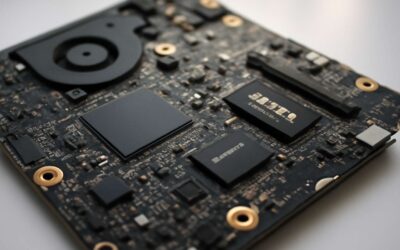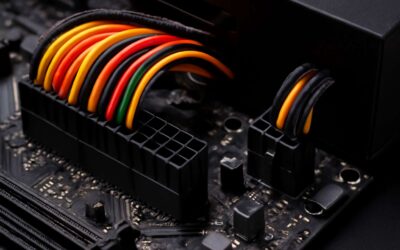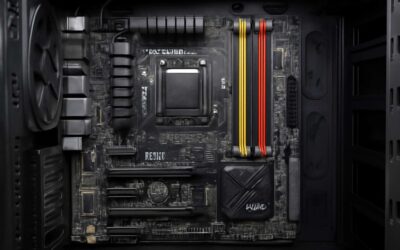Understanding HSN Codes for Electronic Goods
What are HSN Codes and Their Significance?
In the intricate mosaic of global trade, HSN codes serve as the universal language, translating the complex world of electronic goods into a structured system that simplifies commerce. For those venturing into the realm of motherboards, understanding the motherboard HSN code is akin to discovering a secret passageway in an enchanted castle—unlocking clarity amidst the chaos. These codes are vital for proper classification, ensuring compliance with tax regulations and smooth customs clearance.
HSN codes, or Harmonized System Nomenclature codes, are standardized numerical identifiers assigned to various products, including electronic components like motherboards. Their importance lies in fostering transparency and consistency in international trade, thereby reducing disputes and delays. Recognizing the specific motherboard HSN code not only streamlines documentation but also helps businesses navigate the labyrinth of import-export duties seamlessly.
Role of HSN Codes in Taxation and Customs
In the shadowed corridors of international trade, the role of HSN codes for electronic goods is nothing short of a cryptic key—unlocking the gates of compliance and clarity. The motherboard HSN code, in particular, acts as a silent sentinel, guiding shipments through the labyrinth of customs with an almost spectral precision. These numerical sigils are not mere numbers; they are the language of commerce, whispering the true nature of each electronic artifact—motherboards included—across borders.
Understanding the significance of the motherboard HSN code is crucial, especially in a landscape where misclassification can lead to unforeseen penalties or delays. HSN codes serve as the backbone of taxation and customs procedures, ensuring that every component is correctly identified and taxed accordingly. For example, the correct classification can mean the difference between a smooth passage and a bureaucratic nightmare. The codes streamline the process, but they also cast a shadow of responsibility—demanding precision and awareness from those who navigate this spectral realm of trade.
Categories of HSN Codes for Electronic Devices
Understanding the classification of electronic goods through HSN codes reveals a fascinating layer of the global trade web—an intricate system that bridges commerce and compliance. The motherboard HSN code, in particular, embodies this complexity, serving as a vital identifier that transcends mere numerals. It’s a key that unlocks the labyrinthine corridors of customs, ensuring that each shipment aligns with the precise categorization required by law.
Categories of HSN codes for electronic devices are meticulously structured, reflecting the diverse range of modern technology. These codes group similar products under a unified classification, simplifying the complex landscape of electronic components. For instance, the codes for motherboards fall into specific subcategories that distinguish them from other electronic hardware, emphasizing their unique nature and function. Recognizing these distinctions is crucial, especially when navigating the nuanced corridors of international trade and taxation.
Detailed HSN Code Classification for Motherboards
Common HSN Codes Applicable to Motherboards
In the intricate world of electronic classification, the motherboard hsn code serves as a vital key, unlocking precise taxation and customs procedures. This code isn’t just a string of numbers; it’s a gateway to understanding how motherboards are categorized within the global trade framework. The detailed classification of motherboard hsn code ensures clarity, preventing potential disputes and streamlining import-export activities across South Africa’s bustling markets.
Typically, the motherboard hsn code falls under a specific heading within the electronic devices category, often classified with other computer components. The classification process involves a meticulous breakdown, where the code’s digits convey information about the product’s material, function, and technological specifications. For example, common HSN codes applicable to motherboards include the following:
- 8473 – Parts and accessories of the machines of heading 8471 (which includes computers and their components)
- 8517 – Electrical apparatus for line telephony or line telegraphy, which sometimes overlaps with certain motherboard features
Understanding these classifications helps manufacturers, importers, and customs officials navigate the complex landscape of electronic trade, ensuring compliance and efficiency. The precise identification of the motherboard hsn code can make the difference between smooth customs clearance and costly delays, highlighting its importance in South Africa’s vibrant tech ecosystem.
Differences Between HSN Code 8473 and Related Codes
The classification of the motherboard hsn code might seem like a bureaucratic labyrinth, but understanding its nuances can save a world of trouble during import and export. The primary code, 8473, covers parts and accessories of machines under heading 8471, which includes computers and their components. This specificity is crucial because it ensures that motherboards are correctly identified within the broader electronic devices category, avoiding the infamous customs delays that can turn a smooth transaction into a logistical nightmare.
However, distinctions between 8473 and related codes like 8517—covering electrical apparatus for line telephony or telegraphy—highlight the importance of precise classification. For instance, some motherboards with integrated communication features might blur these lines, making the correct motherboard hsn code assignment a meticulous task for importers and customs officials alike.
- Motherboard hsn code 8473 is the go-to classification for most standard motherboards and their accessories.
- Codes like 8517 pertain to specialized electronic apparatus, sometimes overlapping with motherboard functionalities, but generally not the primary classification.
In the bustling trade corridors of South Africa, clarity in these classifications isn’t just academic; it’s the difference between a swift clearance and an unwelcome delay. Knowing the subtle differences between these codes ensures that the complex dance of electronic trade proceeds with grace and efficiency, making the motherboard hsn code an essential piece of the puzzle.
How to Determine the Correct HSN Code for Motherboards
Pinpointing the correct motherboard HSN code can feel like navigating a dense jungle of classification rules, but it’s an essential step in streamlining import and export processes. The key lies in understanding the detailed HSN code classification system, which categorizes electronic components with precision. For motherboards, the dominant classification is generally 8473, covering parts and accessories of machines under heading 8471—namely computers and their components.
To determine the correct motherboard HSN code, consider the motherboard’s primary function and features. If the motherboard includes integrated communication functions, such as network interfaces, it might tempt a classification under related codes like 8517. However, for standard motherboards, 8473 remains the most accurate and widely accepted classification. Recognizing these nuances not only ensures compliance but also prevents delays at customs, which can be costly and disruptive.
- Examine the motherboard’s specifications—does it serve as a core component of a computer or does it incorporate specialized communication features?
- Consult the detailed HSN code descriptions—are the features aligned with the characteristics outlined for code 8473 or a related category?
- When in doubt, seek expert advice or refer to official customs guidelines to avoid misclassification that could lead to penalties or clearance delays.
This meticulous approach to classifying the motherboard HSN code ensures a smooth trade flow, especially in busy markets like South Africa, where clarity in customs documentation can make all the difference. Mastering the intricacies of HSN classification not only safeguards compliance but also enhances the efficiency of electronic trade transactions—an advantage that savvy importers and exporters cannot afford to overlook.
Legal and Regulatory Aspects
GST Implications of Motherboard HSN Codes
In the intricate dance of commerce, understanding the legal and regulatory landscape surrounding the motherboard HSN code is paramount. As South Africa’s tax authorities tighten their grip on import and export regulations, the GST implications of correctly classifying a motherboard HSN code become increasingly significant. Misclassification can lead to hefty penalties or delayed shipments, transforming what should be a straightforward transaction into a bureaucratic labyrinth.
Moreover, the accurate determination of the motherboard HSN code influences the applicable GST rate, ensuring compliance with national standards. Ensuring proper adherence to these regulations not only safeguards businesses from legal repercussions but also streamlines the customs clearance process. For entities involved in the trade of electronic components, being vigilant about the precise HSN classification is not just a matter of compliance but a strategic imperative that preserves operational fluidity.
Compliance Requirements for Import and Export
In the shadowed corridors of international trade, the legal labyrinth surrounding the motherboard HSN code demands unwavering vigilance. South Africa’s customs authorities, ever more meticulous, scrutinize every shipment with an unyielding eye—misclassification is a perilous mistake that can unleash penalties as relentless as a specter’s grasp. The precise classification of a motherboard HSN code is not merely bureaucratic; it is a safeguard against the chaos of delays and legal repercussions.
Compliance requirements for import and export hinge on an intricate understanding of these codes. Authorities require that businesses demonstrate meticulous adherence, lest they fall prey to penalties or shipment holds. The process involves:
- Accurate documentation of the motherboard HSN code
- Adherence to the applicable GST rate based on correct classification
- Fulfillment of all statutory declarations to avoid legal entanglements
In this dark dance of commerce, the true mastery lies in embracing the complexities of legal and regulatory frameworks—ensuring that each motherboard HSN code is not just a number, but a shield against the chaos lurking in the shadows of international trade.
Documentation and Record-Keeping
In the intricate dance of international trade, meticulous documentation and diligent record-keeping serve as the backbone of legal compliance. When dealing with the motherboard HSN code, every detail must be preserved with unwavering precision. Proper records not only facilitate smooth customs clearance but also act as a safeguard against potential disputes or audits. As regulations tighten, especially in South Africa, the importance of maintaining comprehensive documentation cannot be overstated.
To ensure compliance, businesses should adopt a systematic approach to record-keeping. This includes maintaining copies of invoices, customs declarations, and shipment details that explicitly reference the correct motherboard HSN code. Additionally, it’s wise to keep a detailed log of all correspondence with customs authorities, including declarations and any amendments made during the process. Such meticulous record-keeping helps demonstrate transparency and adherence to statutory requirements, reducing the risk of penalties or shipment delays.
In some cases, an ordered list becomes useful for clarity:
- Securely store all import/export documentation linked to the motherboard HSN code.
- Regularly update records to reflect any changes or amendments in classification.
- Ensure that statutory declarations are correctly filled and retained for future reference.
Legal and regulatory aspects surrounding the motherboard HSN code demand a disciplined approach—one that intertwines precision with foresight. Proper documentation is not just an administrative task; it’s an essential shield in the complex realm of customs and taxation, empowering businesses to navigate the shadows of international trade with confidence and integrity.
Practical Applications for Businesses
Choosing the Right HSN Code for Ecommerce and Retail
In the bustling corridors of South Africa’s e-commerce and retail sectors, selecting the correct motherboard HSN code can be akin to navigating a labyrinth—each turn laden with fiscal implications and compliance nuances. A precise classification ensures that businesses avoid the pitfalls of misreporting, which can lead to hefty penalties or delays at customs. Moreover, understanding the specific motherboard HSN code used in transactions enhances transparency, enabling smoother auditing processes and fostering trust with tax authorities.
Practical application of these codes extends beyond mere compliance; it influences inventory management, pricing strategies, and even supplier negotiations. For instance, when importing or exporting motherboards, companies must align their documentation with the appropriate HSN code, such as 8473, to streamline customs clearance. And let’s not forget, an accurate motherboard HSN code can also impact GST calculations—making it a pivotal component in financial planning.
- Ensures proper tax treatment and duty applicability
- Facilitates seamless customs clearance
- Supports accurate inventory categorization
Impact of HSN Codes on Import-Export Duties
In international trade, a single mistake in the motherboard HSN code can cost businesses thousands in duties and delays. Accurate classification directly impacts import-export duties, ensuring that tariffs are correctly applied and compliance is maintained. When a motherboard is correctly identified with its specific HSN code, customs clearance becomes swift and predictable.
Misclassification can lead to overpayment or underpayment of duties, both of which invite penalties or legal complications. For example, a correctly assigned motherboard HSN code like 8473 ensures that duty rates are properly calculated, aligning with current customs regulations. This precision allows businesses to avoid unnecessary financial strain and streamline their supply chain.
Moreover, the correct motherboard HSN code plays a vital role in inventory management. Proper categorization supports accurate stock tracking and helps in negotiating better terms with suppliers. In the end, understanding and applying the right HSN code isn’t just about compliance—it’s a strategic move that influences a company’s financial health and operational efficiency.
Updating HSN Codes in Business Records
Accurately updating the motherboard HSN code in business records can be a game-changer for companies engaged in import-export activities. When businesses invest time in reviewing and correcting their HSN classification, they pave the way for smoother customs clearance and avoid unnecessary delays. This process not only ensures compliance but also enhances operational efficiency, saving precious time and resources.
Proper documentation of the motherboard HSN code is crucial during audits and when negotiating with suppliers. It provides clarity and consistency, supporting transparent communication across the supply chain. For instance, having a reliable record of the correct motherboard HSN code helps prevent costly misclassification and guarantees that tariffs are applied correctly, safeguarding the company’s financial health.
Businesses can consider implementing periodic reviews of their product HSN codes, especially when expanding their product range or entering new markets. This proactive approach minimizes risks and keeps the company aligned with the latest customs regulations. Ultimately, updating the motherboard HSN code in business records isn’t just about compliance—it’s a strategic step toward resilient and agile trade operations.
Resources and Support
Official HSN Code Listings and Databases
In the realm of trade and commerce, precision is paramount—especially when it comes to the intricate tapestry of HSN codes. For those navigating the labyrinth of electronic imports and exports, resources and support from official HSN code listings and databases serve as the guiding stars. These repositories are treasure troves of meticulously categorized codes, enabling businesses to unlock clarity and compliance effortlessly.
Access to authentic and regularly updated HSN code databases ensures your motherboard HSN code aligns perfectly with current regulations, avoiding costly discrepancies. Many government portals and trade organizations provide comprehensive, user-friendly platforms where you can verify and cross-reference the correct codes. This seamless access not only simplifies documentation but also fortifies your adherence to taxation and customs mandates in South Africa.
To streamline your process, consider utilizing official resources such as:
- National Customs Authority Websites
- Trade and Industry Regulatory Portals
- Authorized HSN code databases for electronic components
Leveraging these tools ensures your motherboard HSN code remains precise, up-to-date, and compliant—paving the way for smooth international trade operations and optimal duty management. In this digital age of commerce, reliable support systems illuminate the path through the complex corridors of HSN codes, transforming potential confusion into crystal-clear clarity.
Consulting Tax and Customs Experts
Accurate classification of your motherboard HSN code can make or break your import-export processes. When dealing with complex customs regulations, consulting tax and customs experts offers invaluable insight. These professionals possess deep knowledge of HSN codes and can help you navigate the shifting landscape of trade compliance in South Africa. Their expertise ensures that your motherboard HSN code aligns perfectly with current regulations, minimizing delays and penalties.
Many businesses underestimate the importance of expert support until faced with costly discrepancies. Engaging with dedicated consultants provides clarity, especially when dealing with nuanced classifications or updates in customs policies. They can assist in verifying the correct HSN code, managing documentation, and understanding GST implications associated with motherboard imports or exports.
Some firms prefer to utilize official resources or authoritative databases, but the nuanced interpretation often requires a human touch. Whether you’re a small retailer or a large manufacturer, the right support can streamline your operations and safeguard your compliance. Remember, the right combination of expert advice and reliable resources fortifies your approach to managing the motherboard HSN code efficiently in South Africa’s trade environment.
Tools for HSN Code Identification
In the labyrinthine world of international trade, resources and support tools for HSN code identification are the trusty compass guiding your ship through turbulent customs waters. With the right tools at your fingertips, pinpointing the correct motherboard HSN code becomes less of a game of chance and more of a calculated maneuver. No need to rely solely on guesswork or outdated paper catalogs—digital databases and official government portals are now your best allies. These platforms often feature search functions that allow you to input product descriptions and receive tailored HSN code suggestions, significantly reducing the risk of misclassification.
For those who prefer a more structured approach, consider utilizing an ordered list of reliable resources:
- Official South African Customs Department online HSN code listings
- Comprehensive electronic tariff databases with real-time updates
- Trade compliance software equipped with HSN code verification modules
- Consultation with tax and customs experts to decode the nuances of complex classifications
These tools, combined with expert guidance, ensure that your motherboard HSN code aligns perfectly with current trade regulations. By leveraging such resources, businesses can navigate the ever-shifting landscape of customs compliance with confidence, avoiding costly delays and penalties. After all, in the high-stakes game of import-export, knowledge isn’t just power—it’s your shield against chaos.




0 Comments